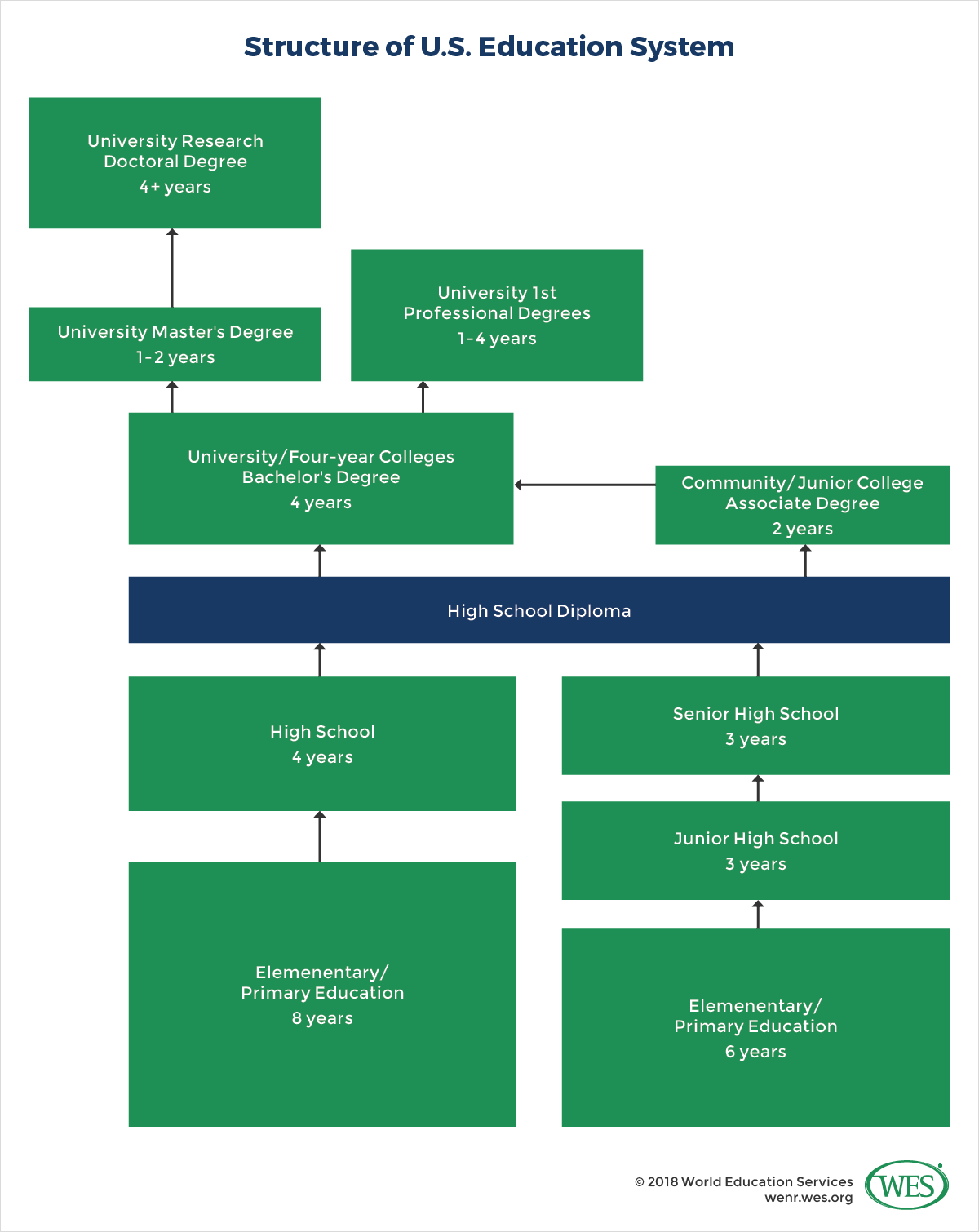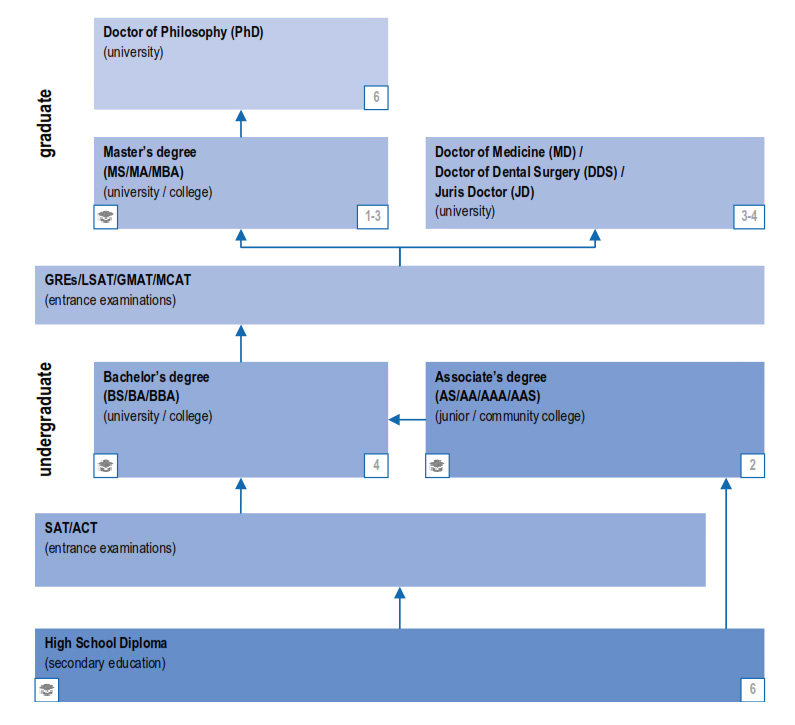The U.S.A Higher Education System: Troubling Insights & Missed Innovations
- Update Time : Thursday, May 23, 2024

The U.S.A. Higher education system offers diverse programs and high-quality education. It is renowned globally for its academic excellence, research opportunities, and cutting-edge facilities.
With a wide range of universities, colleges, and technical institutions, students have ample choices to pursue their desired field of study. The system encourages innovation, critical thinking, and practical learning experiences, preparing students for successful careers in various industries. Additionally, the emphasis on holistic development equips graduates with the skills needed to thrive in the competitive job market.
The U. S. A. Higher education system is known for fostering creativity, leadership, and global perspectives, making it a top choice for domestic and international students seeking world-class education.
The Pillars Of USA Higher Education
The Role Of Liberal Arts
The liberal arts play a crucial role in the U.S.A higher education system, emphasizing a well-rounded education that fosters critical thinking, effective communication, and a broad understanding of various disciplines. Students engage in subjects such as literature, history, philosophy, and the arts, preparing them for diverse career paths and lifelong learning.
Research Universities And Their Impact
Research universities are pivotal in driving innovation and progress. They serve as hubs for groundbreaking research, technological advancements, and academic collaboration. These institutions contribute significantly to the advancement of knowledge, addressing complex global challenges, and nurturing the next generation of scholars and innovators.

Credit: educationusa.state.gov
Comparative Global Standing
The U. S. A Higher Education System is globally recognized for its excellence and diverse opportunities. With top-ranked universities, cutting-edge research facilities, and a wide range of academic programs, it attracts students from around the world. As a result, the U.
S. A holds a comparative global standing in higher education.
The U.S.A Higher Education System holds a prominent position on the global stage, consistently ranking high in international assessments and attracting talent from all over the world. Its comparative global standing can be understood through international rankings and the attraction it holds for global talent.
International Rankings
The U.S.A Higher Education System has consistently secured top positions in various international rankings, solidifying its reputation as a leader in higher education. These rankings consider factors such as academic reputation, faculty quality, research output, and student satisfaction.
One such ranking system is the QS World University Rankings, which annually evaluates universities worldwide. Many prestigious U.S. universities consistently rank within the top 100, such as Harvard University, Stanford University, and Massachusetts Institute of Technology (MIT).
Another widely recognized ranking is the Times Higher Education World University Rankings. This ranking system assesses universities based on teaching, research, knowledge transfer, and international outlook. Once again, U.S. universities consistently secure top positions, showcasing the country’s commitment to excellence in higher education.
Attraction Of Global Talent
The U.S.A Higher Education System is highly attractive to global talent, with countless students and scholars flocking to its institutions every year. This appeal can be attributed to several factors:
- Academic Excellence: U.S. universities are renowned for their academic rigor and quality of education. They provide opportunities for students to learn from distinguished professors and engage in cutting-edge research.
- Diverse Academic Programs: The U.S.A Higher Education System offers a wide range of academic programs and disciplines, allowing students to explore their interests and pursue their chosen fields of study.
- Research Opportunities: U.S. universities are at the forefront of research advancements in various fields. They provide ample opportunities for students and scholars to engage in groundbreaking research projects and contribute to the global knowledge pool.
- Cultural Diversity: The U.S.A is a melting pot of cultures, making it an enriching environment for international students. Exposure to diverse perspectives and experiences enhances the overall educational journey.
- Career Prospects: Graduates from U.S. universities often enjoy favorable career prospects, both within the country and internationally. The reputation of U.S. degrees and the network developed during the educational journey open doors to exciting job opportunities.
In conclusion, the U.S.A Higher Education System’s comparative global standing is strengthened by its top rankings in international assessments and its ability to attract global talent. The excellence of its universities, diverse academic programs, research opportunities, cultural diversity, and promising career prospects make it a highly sought-after destination for students and scholars worldwide.
Funding And Tuition Models
The U. S. higher education system offers a variety of funding and tuition models to support students’ academic pursuits. These models include scholarships, grants, loans, and work-study programs, providing opportunities for students to access education and manage the associated costs.
The U.S. higher education system operates on diverse funding and tuition models. The type of institution, whether public or private, greatly influences the cost of education and the availability of financial aid. Understanding these aspects is essential for students and families navigating the higher education landscape.
Private Vs Public Institutions
Public institutions receive government funding, often resulting in lower tuition fees for in-state residents. Private institutions, on the other hand, rely heavily on tuition and private donations, leading to higher costs but also potentially offering more scholarships.
Scholarships And Financial Aid
Institutions offer merit scholarships to attract students, reducing financial burden. Financial aid, such as grants and loans, helps cover tuition costs; FAFSA determines eligibility. Work-study programs enable part-time campus jobs for students. Families can use 529 plans with tax benefits for education savings. Understanding funding, tuition models, scholarships, and aid is crucial for navigating U.S. higher education.
Curriculum Evolution And Flexibility
Curriculum evolution and flexibility are integral aspects of the U.S.A higher education system, allowing students to pursue a diverse range of academic interests and tailor their educational experience to meet their career goals. This adaptability reflects a dynamic approach to learning, fostering innovation and relevance in a rapidly changing global landscape.
Interdisciplinary Studies
Interdisciplinary studies are at the forefront of the evolving higher education curriculum in the U.S.A. This approach encourages students to integrate knowledge and methodologies from multiple disciplines, fostering a holistic understanding of complex issues and innovative problem-solving skills. By embracing interdisciplinary studies, students gain a broader perspective and are better equipped to address real-world challenges.
Customizable Degree Programs
The U.S.A higher education system offers customizable degree programs that empower students to tailor their academic journey to align with their unique interests and career objectives. From selecting specialized electives to pursuing double majors or minors, students have the flexibility to personalize their educational experience. This customization fosters a sense of ownership and enhances the relevance of the learning process.
Technological Integration In Learning
The U.S.A higher education system has embraced technological integration in learning to enhance the educational experience for students. This advancement has significantly transformed the traditional classroom setting, offering innovative methods of instruction and interaction.
Online Education Platforms
Online education platforms have become a cornerstone of the U.S.A higher education system, providing students with flexible learning opportunities. These platforms offer a wide array of courses, allowing learners to access educational materials from anywhere, at any time.
Blended Learning Approaches
Blended learning approaches have gained prominence in the U.S.A higher education system, combining traditional classroom instruction with online resources. This approach fosters a dynamic learning environment, catering to diverse learning styles and preferences.
Entrepreneurship And Industry Collaboration
Entrepreneurship and Industry Collaboration play a vital role in the U.S.A higher education system. The emphasis on fostering a spirit of innovation and entrepreneurship has led to the establishment of various mechanisms to support startups and facilitate industry collaboration.
Startup Incubators
Startup incubators are an integral part of the higher education system in the U.S.A. These incubators provide aspiring entrepreneurs with the necessary resources, mentorship, and infrastructure to kickstart their ventures. They offer a nurturing environment where students and alumni can develop their business ideas into viable enterprises. Many universities have dedicated spaces and programs to incubate and accelerate the growth of startups.
Partnerships With Corporates
Universities in the U.S.A actively seek partnerships with corporates to bridge the gap between academia and industry. These collaborations enable students and faculty to work on real-world problems, gaining practical experience and industry exposure. Corporates, in turn, benefit from access to fresh talent, innovative ideas, and cutting-edge research from the academic institutions.
Student Life And Extracurriculars
When it comes to the U.S.A higher education system, student life and extracurricular activities play a vital role in shaping the overall college experience. The vibrant campus culture, diverse athletics, and numerous societies provide students with a well-rounded education beyond the classroom.
Campus Culture
The campus culture in U.S. universities is known for its diversity and inclusivity. Students from various backgrounds come together to create a rich tapestry of experiences, beliefs, and traditions. This melting pot of cultures fosters an environment of learning and understanding, promoting open-mindedness and global citizenship.
Athletics And Societies
The U.S. higher education system offers a wide range of athletics and societies for students to engage in. From intercollegiate sports teams to academic clubs and special interest groups, there’s something for everyone. These extracurricular activities not only promote physical fitness and teamwork but also provide opportunities for personal growth and leadership development.

Credit: wenr.wes.org
Future Trends And Predictions
The landscape of higher education in the U.S.A. is constantly evolving, with new trends and technologies shaping the way students learn and institutions operate.
Ai And Automation In Education
Artificial Intelligence (AI) and automation are revolutionizing the education sector, providing personalized learning experiences and streamlining administrative tasks.
Sustainability In Higher Education
In response to growing environmental concerns, sustainability has become a key focus for higher education institutions, with a shift towards eco-friendly practices and curriculum.

Credit: www.istudentz.com
Frequently Asked Questions
What Is The Us Higher Education System?
The US higher education system is made up of colleges and universities that offer undergraduate, graduate, and professional degree programs. Students can attend public or private institutions, and there are various types of colleges, such as community colleges, liberal arts colleges, and research universities.
Admission requirements and tuition fees vary by institution.
How Is The High School System In Usa?
The high school system in the USA is typically divided into four grades, starting from 9th to 12th grade. Students study a range of subjects and can participate in extracurricular activities. Graduation requirements vary by state, but commonly include credits in core subjects and passing standardized tests.
What Is The Current Education System In Usa?
The current education system in the USA includes public schools, private schools, and homeschooling options. It is decentralized, with each state setting its own standards. The system provides various educational pathways for students to pursue their academic and career goals.
Why Is Us Higher Education So Good?
US higher education excels due to top-notch faculty, cutting-edge research, diverse programs, and global reputation. These factors attract students worldwide.
Conclusion
The U. S. Higher education system offers diverse opportunities for students to pursue their academic and career goals. By providing a range of programs, resources, and experiences, universities empower individuals to thrive in a competitive global landscape. Embracing this system can lead to personal growth and professional success.


















Leave a Reply